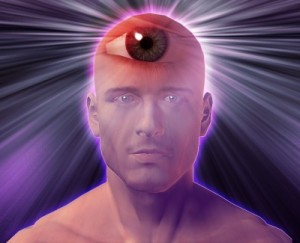Extrasensory Perception (ESP)
Extrasensory perception (ESP), also known as cryptesthesia and the sixth sense, is the ability to acquire information without the use of the five physical senses. Many people believe that everyone is born with one form or another of ESP. For some people it is more developed than others. Often, by the age of four or five years old, logic and reason start to take a stronger hold on the mind and these abilities are weakened or lost. However, there are those who do continue to develop their ESP, especially those individuals who are born into a family where psychic abilities are multi-generational and/or nurtured and encouraged.
The following are the abilities that fall under the umbrella of ESP.
Clairvoyance: Ability to see events from the past, present or future without the use of the regular five senses.
Clairaudience: Ability to hear sounds from the spirit world.
Clairsentience: Ability to feel or sense auras, vibrations and the presence from those that have passed on.
Claircognizance: Ability to psychically know something without pre-knowledge or being told.
Precognition: Knowledge of an event before it occurs.
Retrocognition: Ability to know events that have taken place in the past without previous knowledge.
Telepathy: Ability to transfer and receive thoughts and feelings from one mind to another without verbal conversation.
Psychometry: Ability to pick up impressions, visions, thoughts, or events relating to someone by holding an object belonging to that person.
Psychokinesis: Ability to physically move objects with one’s mind.
Psychic Mediumship: Ability to communicate with humans and animals who have passed on to the spirit world.
Premonition: A forewarning that something is going to happen.
D’j’ vu: The feeling of being in an exact situation or place before.
Intuition: Ability to know something without the use of logic or conscious reasoning. Knowledge gained by feeling, not fact.
In the field of parapsychology, these paranormal events are referred to as psi experiences. There are two major fields of study: 1. psi-gamma, which refers to the ability to acquire information through nonsensory or nonphysical methods, for example telepathy, clairvoyance and precognition; and 2. psi-kappa, which refers to the ability to affect something or move physical objects through nonphysical methods, for example, psychometry, telekinesis or psychic healers. Its purpose is to understand the processes or causation of these events. The studies of psi phenomena are done under well-controlled conditions, in order to remove doubt and provide valid conclusions.
In the 1930s, Joseph Rhine and his wife began research into these events. Rhine and his colleague, Carl Zener, developed Zener cards, a 25-card deck containing five groups each of five like symbols, to be used to test the telepathic ability of an individual. Each card contains an image of either a circle, cross, square, star or wavy line. The 25 cards are shuffled and kept out of sight from the individual being tested. The subject is then asked to give the identity of the card. A scoring system of how many correct card matches made by the subject determines his/her level of telepathy. For example, a score of 10 correct out of 25 indicates some form of telepathy. A score over 10 correct shows a more significant level of abilities. The test should be taken several times to rule out that the answers were just by chance.
![]()
The use of Zener cards in ESP testing has been significant in measuring its accuracy. Also, changes in brain activity have been recorded during the testing of psychics who are exercising their abilities. All of this research will prove invaluable, given the increased amount of people who either claim to possess psychic abilities or who have experienced many of these phenomena first-hand.
For more information on developing psychic abilities, visit the Learning Room.

